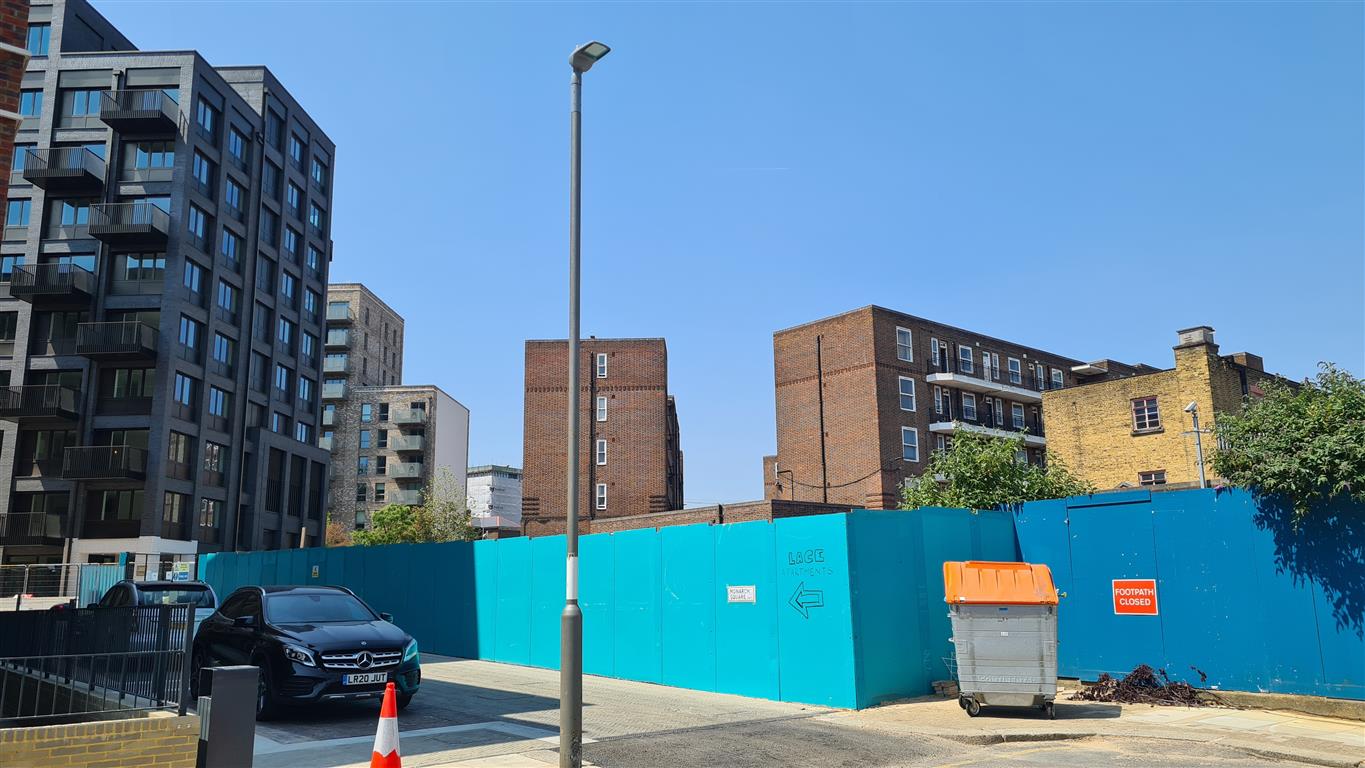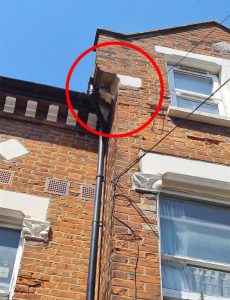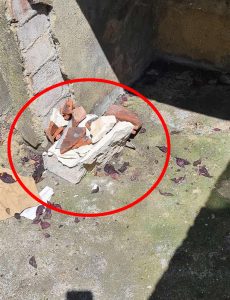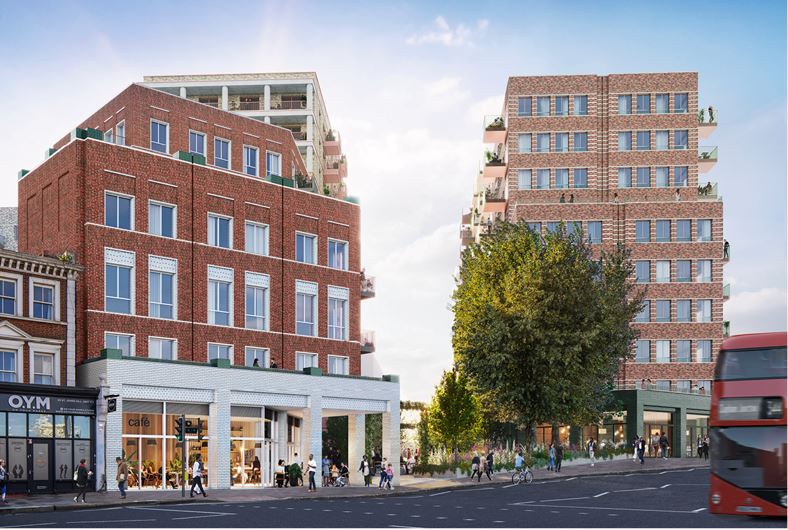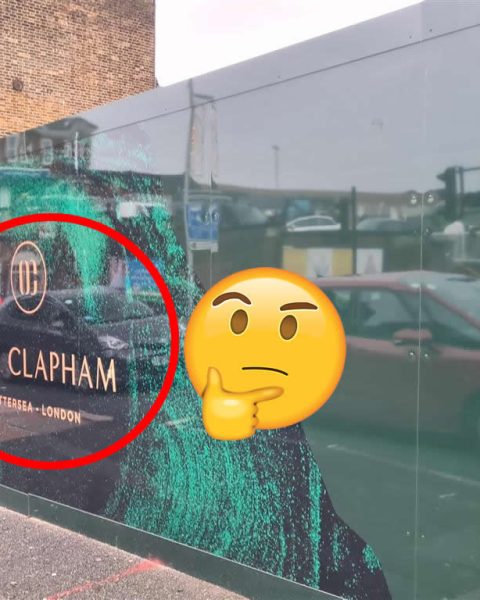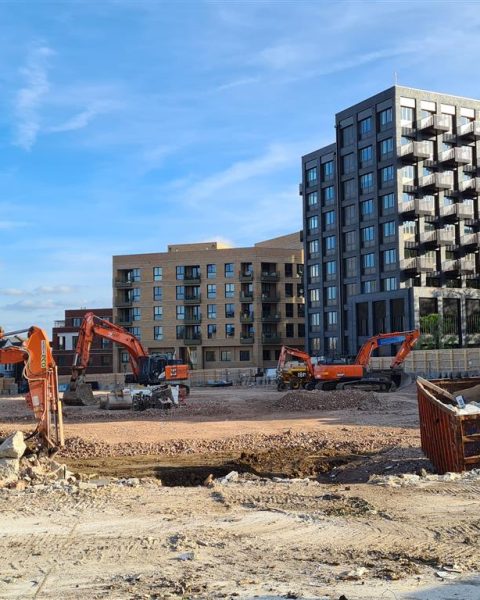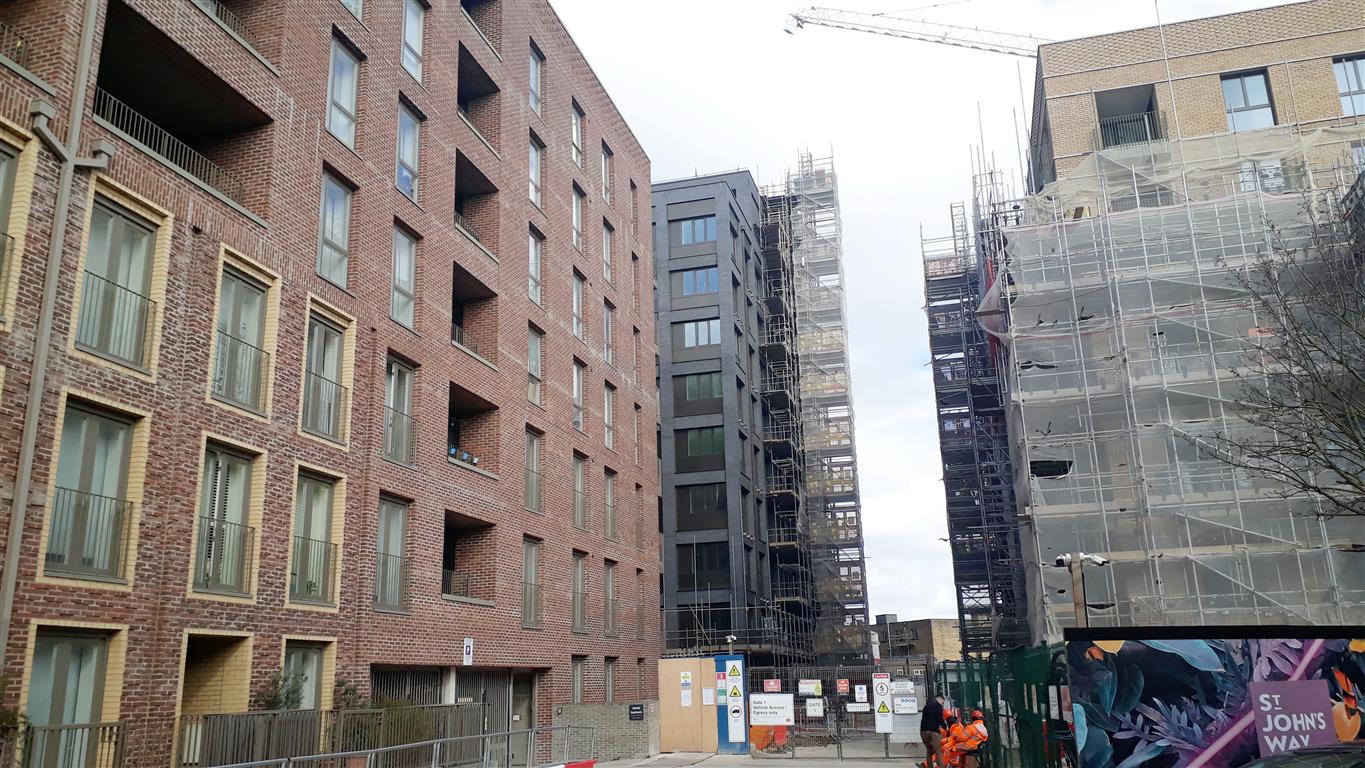More than a year after receiving planning permission from Wandsworth Council, just prior to the election, Peabody is now starting on the third and final phase of their redevelopment in Clapham Junction.
The start of the final phase of the Peabody project is now underway. The demolition works are expected to take place from June until the middle of October 2023. The initial phase, known as the “soft strip demolition,” will involve the removal of all non-structural elements (i.e. floors, partitions, electrical installations, heating systems, etc). This phase will continue until August, overlapping with the subsequent “hard demolition” phase, which will employ heavy equipment and machinery from July to October.
Piling works, which lay the foundation for the new building, are scheduled to begin in October and are anticipated to be completed by December 2023.
Mount Anvil is organising surveys to smooth concerns of local residents, ahead of the demolition/construction start
Residents in Eckstein Road contacted Peabody at the end of May with concerns after receiving a leaflet informing them that demolition works were set to commence on June 12th, 2023.
While phase 1 and 2 were built closer to Comyn Road and Boutflower road, the last remaining phase will be directly adjacent to Eckstein Road. Hence, this is easy to understand the concern of residents, especially considering the particularly negative past experiences. Liz Berry, living in Eckstein Road, wrote to them and said:
“The Victorian properties are very vulnerable to vibration – a known fact – and homes have already been damaged by Sisk. Mount Anvil is now on site, and I wanted to ensure you were fully aware of the delicate nature of the surrounding buildings, and to discover how you plan to protect them.
It’s hard to overstate how frightening and worrying the vibrations are. One morning in particular was like an earthquake hit – bangs and crashes causing cracks in the walls and paint / plaster to fall from a ceiling in front of my eyes. I ran out and managed to get the work halted. This was the worst of many days when the whole house seemed to move and shake.”
Initially, Mount Anvil seemed to have learned from past experience with phase 2 and dealing with damage made to neighbouring properties in Comyn Road. One of their earlier leaflet said: “Ensure neighbouring buildings are protected“.
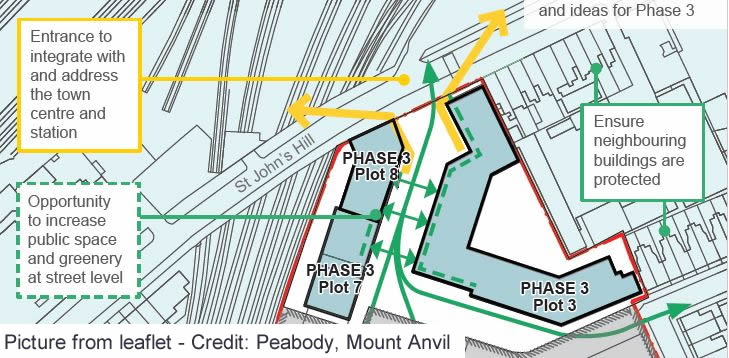
The construction company informed us that they conducted a party wall survey with residents in close proximity to the site (a mandatory party wall agreement with any property within 6 meters from the building site). This was not extended further until recently.
However, when contacted by local residents in close proximity to the site, Mount Anvil was highly responsive. Their Construction Director, Michael Rolfe, arranged a meeting at the property at the beginning of June and attentively listened to past experiences and concerns.
He offered to commission a comprehensive independent survey of the property so any future damage could be promptly assessed.
And they acted promptly as less than a week later they already did a very thorough party-wall survey in several properties in Eckstein Road.
Liz said:
“It’s a massively different experience from Sisk so far, and I’m more comfortable about the hard demolition than I was”
Residents complained about the construction impact and poor engagement from the previous construction company

Sisk was the previous contractor managing the building work on behalf of Peabody. It is an understatement to say that after months of construction, the relationship was not at its best with the local residents of Comyn Road.
During the first lockdown in Spring 2020, while people were confined to their home, Peabody and Sicks contractors chose that time to proceed with the most disruptive phase of the project: the initial piling.
Several local residents complained to Sisk about the damage caused by excavations for phase 2. One Comyn road residents said:
“The vibrations from phase 1 and also the phase 2 vibrations are an awful lot for a Victorian house. I have been in earthquakes in Japan and Taiwan and there’s not a lot of difference in the experience, except the SISK vibrations are most days.”
Indeed some cracks have appeared since the construction work resumed at the beginning of 2020.
- Read our article: Is Peabody’s work damaging properties in Comyn road?
At first, Sisk suggested that the properties affected by their work should bear the cost of conducting their own survey.
It was only in November 2020, about 6 months after the start and after months of complaints from the residents that Peabody agreed during a video-meeting to have an independent building survey carried out by a building surveyor and structural engineer for the residents who attended the meeting.
In addition, in direct response to resident complaints and the Clapham Junction Action Group’s report, (and perhaps under direct pressure of Peabody), Sisk commissioned acoustic consultants to observe operatives on site and recommend additional methods to minimize noise. They also instructed new subcontractors to implement additional noise mitigation measures. However, these measures were implemented in the autumn when most of the heavy-duty work had already been completed.
Vibration should be monitored and kept to a minimum when a construction site is surrounded by fragile buildings
Sisk claimed that they monitored vibrations in two locations on the site boundary with a red alert at 10 mm/s, which they claim is “half the onset of cosmetic damage” for surrounding properties.
However, guidance BS 5228: Part 4: 1992 ‘Code of practice for noise and vibration control applicable to piling operations’ shows that Sisk monitoring was actually twice the level set to cause structural damage to the type of residential structure you will find in Comyn Road (i.e. Victorian Terrace more than 100 years old, likely to have fragile structure/significant defects).
The company Vibration Monitoring Services Limited, confirmed to us that for a site surrounded by Victorian properties (listed buildings and old buildings), they would normally set the levels at 3 to 5mms, not 10 as Sisk did.
- Read more about British Standards for the level of vibrations in our article and further information about impact on Victorian properties.
In the updated version of BS 5228-2 2009, the British Standard (BSI) introductory statement [p2] says:
“It is suggested that good relations can be developed by keeping people informed of progress and by treating complaints fairly and expeditiously” and “vibrations transmitted from site activities to the neighbourhood can, therefore, cause anxiety as well as annoyance, and can disturb sleep, work or leisure activities“.
Mount Anvil is Peabody’s new partner for this last phase
Peabody has chosen Mount Anvil as its joint partner for the final phase with whom they have some experience working on projects such as the Three Waters development in Bow.
When submitted in 2012, the project was meant to be fully completed in 2018/2019 at the latest. However, 11 years later they are only starting the final phase 3, which means that the length of the project will have nearly doubled in length. A local resident in Comyn Road said: “to get things so wrong, it’s likely that they faked the date to get approval“. Had it been presented as a 14-year project in 2012, it may have been rejected by the Council.
As per the original plan, the third and final phase contains mostly private flats (287 private and 31 shared ownership units that can become private at a later stage), with the income designed to cover some of the cost of upgrading the rest of the site.

The application has undergone slight changes compared to the original presentation in October 2021. Instead of 243 social units, 80 intermediate (shared ownership) and 346 private for the entire site, the plans now consist of still 243 socials, but 86 intermediate and 329 private. This means that Peabody is now providing exactly 50% affordable units and 50% private units in terms of the number of units.
While this aligns with policy requirements, it is seen as a disappointment for a charity specialised in social and affordable housing, particularly when compared to the original tenure of the estate with 351 social units.
The last phase of construction approved by a slim majority before election
During the Planning Application Committee meeting on April 26, 2022, Peabody’s proposal for phase 3 of the redevelopment scheme was approved by a narrow margin. All Tory Councillors voted in favour, and all Labour Councillors (but one!) voted against. Labour Cllr Tony Belton, now Chair of Wandsworth Planning Committee, wrote in his May 2022 newsletter:
“George Peabody, the nineteenth-century American philanthropist, who spent many of his US dollars building the original Peabody Estates for the poor of London, would have been horrified.”
The “new” phase 3 plan proposes to add 70 new units to the existing proposal. The density is mainly achieved by offering smaller units within the existing building layout, with a shift towards a larger number of flats with fewer bedrooms. However two blocks will gain extra height – most notably “Plot 03” which will gain four storeys and now matches the tallest one on the site with 12 storeys.
- Read our article: More luxury flats and reduction of social units: the vision of Peabody for more bulk and density at Clapham Junction
As highlighted on this website in many occasions before, once again the planning officers misled the Council, not only by describing the 11% increase as “modest in size in comparison to the consented scheme“, but especially by stating that it was considered acceptable in 2012.

The reality is that it created an outcry and both the local community and the local councillors were campaigning strongly against what was considered a massive and overbearing proposal at the time (SHAME, shouted the audience when it was approved in 2012!). And 11 years ago, Wandsworth officers were already providing the Council with erroneous information.


